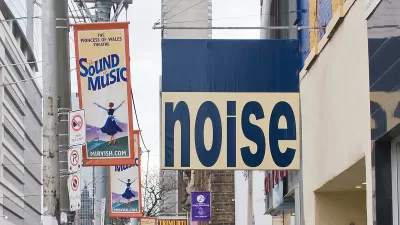While narratives about gentrification and segregation dominate the headlines, one study found evidence of increased integration around the United States.

"In all parts of the United States, the number of neighborhoods that sustain a mix of black, white, Asian and Hispanic residents over time is growing quickly," reports Gillian Kiley.
Kiley is sharing the findings of a new study published in Demography and written by researchers at Brown University and the University of Wisconsin-Whitewater. "Global Neighborhoods: Beyond the Multiethnic Metropolis," as the study is titled, "assessed 342 metropolitan regions with populations of at least 50,000 over the period from 1980 to 2010 to determine whether integrated neighborhoods existed outside of the nation's most diverse metropolitan centers."
The authors chose the term "global neighborhoods" to describe places where whites and blacks live alongside Hispanics, Asians, or both. According to the study, global neighborhoods "are showing up in large numbers in each type of metropolitan center, throughout the country, in urban areas with different histories and combinations of populations."
While the study might seem at first glance to report unequivocally good news, there are also a few reasons to pause. "While the number of global neighborhoods is on the rise, the study also found increasing numbers of all-minority neighborhoods caused by white residents moving out of previously mixed areas—close to a 50 percent increase over the 30-year period," adds Giley.
FULL STORY: Integrated neighborhoods more common across the US, study finds

Alabama: Trump Terminates Settlements for Black Communities Harmed By Raw Sewage
Trump deemed the landmark civil rights agreement “illegal DEI and environmental justice policy.”

Planetizen Federal Action Tracker
A weekly monitor of how Trump’s orders and actions are impacting planners and planning in America.

The 120 Year Old Tiny Home Villages That Sheltered San Francisco’s Earthquake Refugees
More than a century ago, San Francisco mobilized to house thousands of residents displaced by the 1906 earthquake. Could their strategy offer a model for the present?

In Both Crashes and Crime, Public Transportation is Far Safer than Driving
Contrary to popular assumptions, public transportation has far lower crash and crime rates than automobile travel. For safer communities, improve and encourage transit travel.

Report: Zoning Reforms Should Complement Nashville’s Ambitious Transit Plan
Without reform, restrictive zoning codes will limit the impact of the city’s planned transit expansion and could exclude some of the residents who depend on transit the most.

Judge Orders Release of Frozen IRA, IIJA Funding
The decision is a victory for environmental groups who charged that freezing funds for critical infrastructure and disaster response programs caused “real and irreparable harm” to communities.
Urban Design for Planners 1: Software Tools
This six-course series explores essential urban design concepts using open source software and equips planners with the tools they need to participate fully in the urban design process.
Planning for Universal Design
Learn the tools for implementing Universal Design in planning regulations.
Clanton & Associates, Inc.
Jessamine County Fiscal Court
Institute for Housing and Urban Development Studies (IHS)
City of Grandview
Harvard GSD Executive Education
Toledo-Lucas County Plan Commissions
Salt Lake City
NYU Wagner Graduate School of Public Service





























